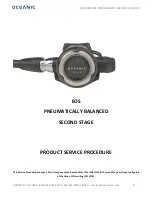
Concepts and Features
R&S
®
ZNB/ZNBT
169
User Manual 1173.9163.02 ─ 38
number of "Total Readings" is reached or until the deviation between the calibrated
reference receiver power and the cal power is below a specified "Tolerance". The
external power meter is no longer used for these repeated calibration sweeps;
everything is based on the previously calibrated reference receiver. This speeds up
the calibration procedure but does not impair its accuracy.
3. After the flatness calibration, the R&S
ZNB/ZNBT performs an additional verifica-
tion sweep in order to demonstrate the accuracy of the calibration.
After the source power calibration, one can expect the power at the calibration plane to
be within the range of uncertainty of the power meter. The reference receiver reading
corresponds to the calibrated source power. After a change of the sweep points or
sweep range, the analyzer interpolates or extrapolates the calibration data; see
ter 4.5.6.3, "Power Calibration Labels"
4.5.6.2
Measurement Receiver Calibration
A measurement receiver calibration ensures that the power readings at a specified
receive port of the analyzer (b-waves) agree with the source power level calibrated at
an arbitrary calibration plane. Typically, the calibration plane is at the input of the
receiver so that the calibration eliminates frequency response errors in the calibrated
receiver.
In contrast, the reference receiver calibration, which is automatically performed
together with the (source) power calibration, ensures correct power readings for the
generated waves (a-waves).
A measurement receiver calibration generally improves the accuracy of power (wave
quantity) measurements. The correction data acquired in a frequency or power sweep
is re-used if a "Time" or "CW Mode" sweep is activated.
Calibration procedure
The measurement receiver calibration is based on a received wave b
n
with known
power. The calibration involves a connection to a (previously source power-calibrated)
source port.
The received wave to calibrate can be generated by a different analyzer port P
m
(m
≠
n) or by an external generator. Alternatively, it is possible to connect an Open or Short
standard to port P
n
: The measurement receiver is calibrated using the reflected wave
a
n
.
Calibration
















































